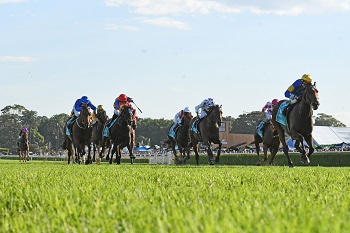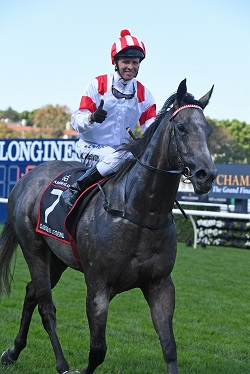Latest News
In the sixth and final part of the series, we find out how professional punter and Champion Bets' form analyst Mark Rhoden approach betting over the autumn and spring periods.
Racing NSW's Brad Gray also asks Rhoden for any key learnings to come out of The Championships, from a punting perspective, plus a couple of horses to keep an eye on when they return next preparation.
Part Three: Jockeys And Trainers
Part Five: Short Priced Favourites
Do you approach betting in carnival periods any differently to the off season?
I try not to, but there is obviously a lot more to consider when doing the form.
The influx of interstate and overseas horses complicates matters, and while I’m happy with the processes I use to line up their form, it does mean that the process of doing the form takes longer.
But, really, if you don’t enjoy the challenge of sorting out a big carnival meeting, you’re hardly going to enjoy doing it in the middle of winter – the presence of the best horses really does make it more interesting and exciting.

Santa Ana Lane's TJ Smith demolition rates as The Championships highlight for Rhoden (Pic: Steve Hart)
What’s the biggest edge in betting in autumn or spring? Are the inflated exotic pools appealing to you at this time?
The quality of the horses themselves is one advantage – the better horses are generally more consistent and can be relied upon to produce their best when they get the right conditions. And with so many “grand final” type races on at this time of year, you can safely assume that all horses are fully wound up and at their peak – you don’t have to estimate where they might be in their preparation so much.
As for exotics, it’s not a huge part of what I do in any case. The bigger players really have the edge in exotics, they are tailor-made for mathematical models to take full advantage – I’m not going to be able to compete with those kinds of players and syndicates. I think punters should review, find what they’re good at and stick to it, and that’s what I try to do. There’s many, many different ways to get ahead in this game. Exotics is one of them, but it’s not my area of strength.
On the flip side to that, what are the benefits of betting outside of carnival time?
If you concentrate on one area, like I do with New South Wales, you build up your knowledge base of a finite pool of horses, which has a lot of advantages. Sydney metropolitan racing, particularly on Saturdays, is of a good standard all year round and always worth betting on.
There are big players around, like the syndicates I spoke about regarding exotics. They tend to bet across multiple areas and have much of what they do automated with the use of data models. Those models give them an edge, but they don’t have the intelligence that comes with knowing individual horses, trainers and jockeys. So that’s where I can get an edge, simply by taking advantage of my own knowledge to identify something that their data can’t.
The Sydney autumn carnival is coming to a close, any key learnings to come out of it? You are always learning in this game aren’t you!

Classique Legend and Kerrin McEvoy (Pic: Steve Hart)
You certainly are!
I’d say be aware, as much as you can, of the main aim for each horse in its preparation – because that’s when you’ll see its peak run. Typically, everything they do to prepare the horse will be aimed at that run.
After that, with the big prizemoney on offer at such a big carnival, the temptation is there for connections to press on with a horse who has already peaked for the preparation. You’re going to have a crack at a race if there’s huge prizemoney involved.
If you can identify those horses that have already peaked and thus are unlikely to improve at their next run, you’ll be at an advantage.
What was the best performance of The Championships in your opinion?
Given the quality of field and the dominance of the performance, you can’t go past Santa Ana Lane’s win in the TJ Smith. It was outstanding – as good a run by a sprinter in this country in the post-Black Caviar era. What a great horse he’s become.
Got a couple of horses that punters can follow into the future from the last couple of weeks?
I really hope Classique Legend stays in Australia, he’s had a remarkable first preparation and will only get better.
I’ve also got a bit of time for a two-year-old filly called Villami, I think she’s capable of winning a good race when she gets conditions to suit.
Buchanan Eyes Stylish Upset As Tribute To 'Gifted' Bronte
Read More
Stable Reports To Stewards - Rhapsody Chic (Wyong Saturday)
Read More
Jockey Notifications - Gosford (Friday) / Wyong (Saturday)
Read More
Robinson Hopes Mare Can Realise Burning Highway Ambition
Read More
Fork In The Road For Byron's Championships Prospects
Read More

